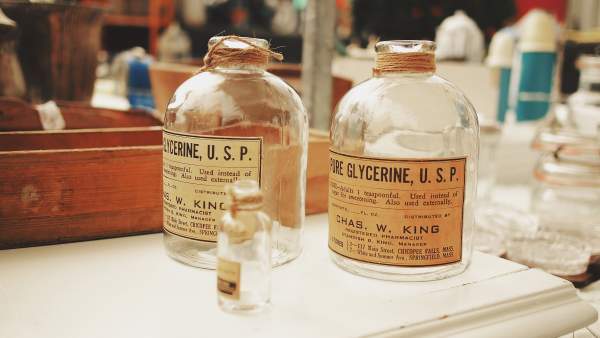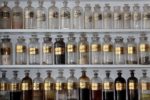This post on cosmetic ingredient names is number 3 in a series on understanding ingredients in body care products in Australia.
What is the ingredient called?
It’s all very well for me to say ‘read the label’ and I’ve written about how ingredient labels don’t always have to include all the ingredients.
So you know you want to avoid the list of chemical ‘nasties’ in your personal care products.
It seems like everyone is warning you about avoiding ingredients like mineral oil, parabens, phythalates and SLS. But how do you know what they are? How do you know what the label is telling you? Are the ingredients safe or not?
Is the ingredient safe?
In order to sell to consumers in Australia, the appropriate regulatory body must consider products to be safe for human use.
But remember how polycarbonate plastics were considered safe for food packaging, despite the health issues associated with BPA?
Or how thalidomide was prescribed for morning sickness with terrible unforeseen consequences?
The processes put in place for our protection are only as good as the research to date. And the ability of regulators to keep up with it.
Is the ingredient natural?
Additionally, there is no regulation of the terms ‘natural or ‘organic’ in advertising. Companies are increasingly using ‘greenwashing’ in their marketing. This is so they appeal to customers looking to decrease their toxic load.
Even if you don’t have allergies or sensitive skin, it is important to do your own research.
It is the only way to make informed choices that you are comfortable with for yourself and your loved ones.
Cosmetic Ingredient Names
Most cosmetic ingredients in body care products go by several different names.
You may think it’s better to choose a cosmetic product that uses natural sounding ingredients. Fr example like “beeswax” or “vitamin E” over one that uses “cera alba” or “tocopherol”.
But actually they are different names for the same things.
Cera alba is the INCI name for natural beeswax. Tocopherol is the INCI name for vitamin E.
In Australia, cosmetic brands can use either the English or INCI name on the label. And depending on the supplier of beeswax or vitamin E it could be a natural or synthetic version.
Therapeutic products need to list active ingredients only. In this case it would use the AAN names “white beeswax” and “beta-tocopherol”. Or d-alpha-Tocopherol or dl-alpha-Tocopherol depending on the chemical structure.
To add to the confusion, many TGA regulated body care products sit next to unregulated cosmetic ones on store shelves.
So even when you think you’re comparing products side-by-side, you’re getting a different story about the ingredients.
Lip Balm Example
A leading natural Australian beauty brand markets a small range of lip balms.
Cosmetic
The marketing description for their moisturising lip balm claims
“Vitamins E, A and K smooth, restore and render the skin satin-soft. Also contains Aloe Vera to moisturise and cool lips”
The ingredients list uses INCI names in descending order of quantity, as required.
“Mineral Oil, Ozokerite, VP/Eicosene Copolymer, Caprylic/Capric Triglyceride, Microcrystalline Wax, Butyrospermum Parkii (Shea) Butter, Silica, Tocopheryl Acetate, Aloe Barbadensis Leaf Extract, Synthetic Wax”
Note the “natural ingredients” Vitamin E and Aloe Vera are at the bottom of the list.
Therapeutic
The marketing description for the equivalent SPF30 lip balm claims
“vitamin E softens, smooths and repairs skin. Aloe Vera moisturises, conditions and calms”
and lists the active ingredients using AAN names as required. Notice the therapeutic product claim to repair the skin. Even though none of the therapeutic actives have any skin repair function?
“ACTIVE INGREDIENTS: Octyl Methoxycinnamate 85mg/g, Octocrylene 50mg/g, Oxybenzone 25mg/g, Butyl Methoxydibenzoylmethane 20mg/g”
The ingredient list does not even include the vitamin E or Aloe Vera referenced in the marketing description. Nor any other excipient ingredients. You could assume the balm formulation to be at least somewhat similar to the non SPF one.
Cosmetic Ingredient Comparison
Here are the ingredients for the moisturising balm with their corresponding AAN names and synonyms.
| INCI | AAN | Synonyms | What is it? |
| (Mineral Oil)Parraffinium Liquidum | liquid paraffin | paraffin – liquidMineral oil white Liquid petrolatum | purified clear odorless liquid obtained from refining petroleum |
| Ozokerite | ceresin | OzokeritePurified Ozokerite Earth wax Cerosin | mineral wax, derived from coal and shale |
| VP/Eicosene Copolymer | PVP/eicosene copolymer | VP/Eicosene copolymerPolyvinyl pyrrolidone/eicosene copolymer | used for binding, film forming, controlling viscosity |
| Caprylic/Capric Triglyceride | medium chain triglycerides | Fractionated coconut oilCaprylic/capric triglyceride Medium-chain triglycerides Miglyol 812 Caprylic/Capric acid triglyceride | gentle moisturizer derived from coconut oil and glycerine |
| Microcrystalline Wax | microcrystalline wax | Petroleum waxwax – microcystalline | wax derived from petroleum |
| Butyrospermum Parkii Butter | shea butter unsaponifiables | Butyrospermum parkii unsaponifiablesVitellaria paradoxa unsaponifiables | Shea butter from the shea tree |
| Silica | Silicon dioxide | Silica – colloidal hydratedSilica Silicic acid Silica gel E551 | Silica mineral |
| Tocopheryl Acetate | dl-alpha-Tocopheryl acetate | All-rac-alpha-Tocopherol acetateVitamin E acetate dl-alpha tocopheryl acetate | Vitamin E ester |
| Aloe Barbadensis Leaf Extract | aloe barbadensis | Aloe veraBarbados aloes Curacao aloes | Aloe vera |
| Synthetic Wax | synthetic wax | Paraffin waxwax – synthetic | Manufactured waxes |
It doesn’t look particularly ‘natural’ to me.
And the only ingredients listed for the SPF balm – all for sun protection
| INCI | AAN | Synonyms | What is it? |
| Octyl methoxycinnamate | octyl methoxycinnamate | Ethylhexyl methoxycinnamateOctinoxate | Absorbs/filters UV rays |
| Octocrylene | octocrylene | 2-Ethylhexyl-2-cyano-3,3-diphenylacrylate | Absorbs/filters UV rays |
| Benzophenone-3 | oxybenzone | Benzophenone-3 | Absorbs/filters UV rays |
| Butyl Methoxydibenzoylmethane | butyl methoxydibenzoylmethane | avobenzone (INN)4-tert-butyl-4′-methoxydibenzoylmethane BMDM | Absorbs/filters UV rays |
Even if the SPF balm DID list its excipient cosmetic ingredient names (which is perfectly allowable and some brands have a greater level of transparency), they are difficult to compare because of the two different naming standards.
What would you choose?
The next post in this series will be about how to research ingredients and find out what the ingredient name actually means.
Follow us on Facebook or Instagram or join our email newsletter to make sure you don’t miss it.




